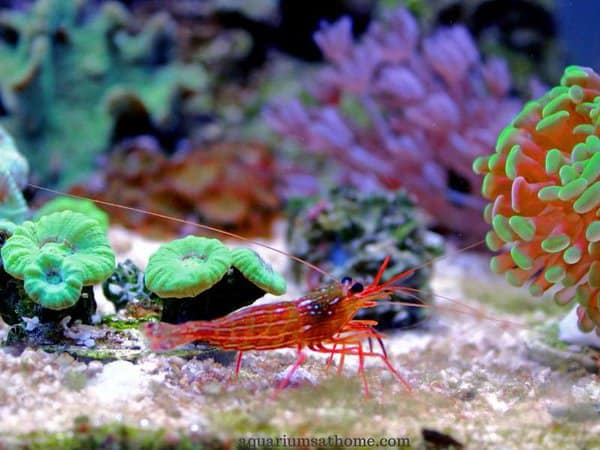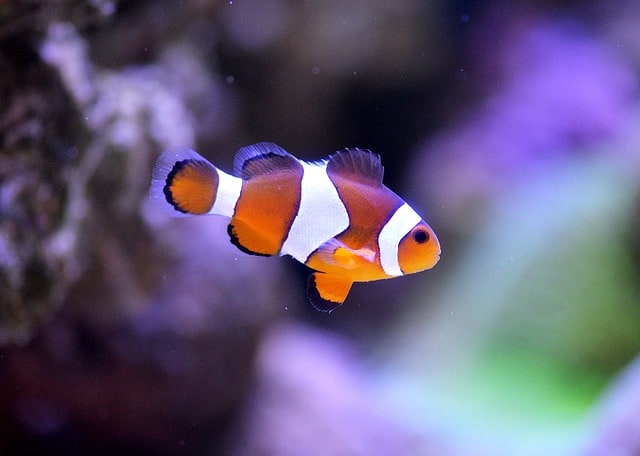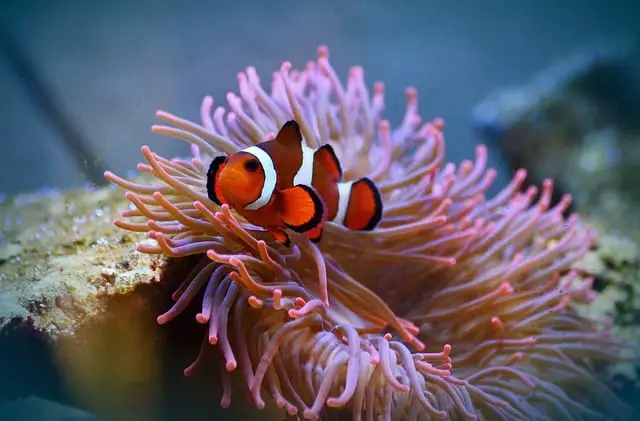Peppermint shrimp (aka Caribbean cleaner shrimp or candy cane shrimp) are a type of saltwater crustacean and quite popular with marine aquarists. If you’re thinking of adding peppermint shrimp to your community tank environment, you may be wondering if you need to feed these scavengers?
Peppermint shrimps are omnivorous ‘cleaner’ shrimp. Therefore, they forage and feast on leftover fish food, detritus, and decaying organic matter in an aquarium. They’re predatory, so they hunt and feed themselves though you can provide them with a few sinking shrimp pellets on occasion.
Now that you know peppermint shrimps typically fend for themselves when it comes to food, let’s ‘dive deeper’ into this topic. Together we’ll discover how often they need to be fed; what they like to eat; if they eat fish; if they’re cannibalistic; what tank conditions are required; aquatic creatures make the best tankmates, and how long they live for.
So, if you’re ready to learn more about the feeding habits of peppermint shrimp and how they sustain themselves in captivity, then let’s begin!
Do I Need to Feed My Peppermint Shrimp?
You typically don’t need to feed peppermint shrimp. This species is predatory by nature, meaning it’ll hunt and forage for food on its own. Being omnivorous, peppermint shrimp will eat both meat- and plant-based foods. As scavengers, they’re not ‘picky’ and will eat just about anything they deem edible.
What do You Feed Peppermint Shrimp?
If you want to supplement your peppermint shrimp’s diet, you can offer them the odd sinking shrimp pellet. As a type of ‘cleaner’ shrimp, they’ll scavenge the tank floor for food debris, detritus, dead fish tissue, and decomposing organic matter.
How often do You Feed Peppermint Shrimp?
If your peppermint shrimp and healthy and foraging for food on a regular basis, you need only feed them once or twice a week. Sinking shrimp pellets are best though you can also offer them a piece of fresh fish to nibble on.

Do Peppermint Shrimp Eat Fish?
Peppermint shrimps are omnivorous and eat both plant- and meat-based foods, including fish. They’ll forage along the substrate and feast upon both living and dead fish tissue. In a community environment with plenty of fish, peppermint shrimp will thrive – so long as the fish remain in the top half of the tank.
Are Peppermint Shrimp Cannibalistic?
Peppermint shrimps are notoriously cannibalistic and highly aggressive towards one another in captivity. If you have a small marine tank, it’s best to keep just one. If you have a large reef tank with plenty of space and lots of hiding places (corals, rocks, pipes, driftwood, etc.), you can keep more.
To ensure the survival of peppermint shrimp in an aquarium, purchase them all the same size and at the same time. Smaller shrimp added to a take later are likely to be eaten. The rule-of-thumb for stocking a saltwater tank with peppermint shrimp is 1 shrimp for every 5 gallons of water.
Do Peppermint Shrimp Need to be Fed Every Day?
Peppermint shrimp do not need to be fed every day. At the very most, you can feed them minimally every other day. The recommended feeding for these scavenging crustaceans is once or twice a week. You don’t want to overfeed them so it’s best you let them forage and fend for themselves.
When during the Day do Peppermint Shrimp Eat?
Peppermint shrimps are nocturnal and prefer to eat at night. They’ll forage along the sand and near rocks in an aquarium to feast on any leftover fish food that wasn’t eaten during the day. They’ll also pick at coral polyps and scour ‘sleeping’ fish for decaying tissue or parasites.
Before the blue or moonlight feature is activated, drop a few sinking shrimp pellets into the tank. If you want to give your peppermint shrimp some frozen brine or mysis shrimp, do so after the aquarium light has turned off.
Do Peppermint Shrimp Help Keep an Aquarium Clean?
Peppermint shrimps are considered a type of ‘cleaner’ shrimp – meaning, they scour organisms for parasites. Typically, they’ll set-up a ‘cleaning station’ on top of corals or live rock, wait for fish to stop by, and then pick them clean of dead tissue and leeching organisms.
Peppermint shrimp also work to keep their aquatic environment clean by foraging along the substrate in a saltwater tank, ridding it of rotting fish food, detritus, and decaying organic material. They also keep aiptasia (anemone pests) from multiplying a reef tank.
How Long can Peppermint Shrimp Live for in Captivity?
Peppermint shrimps are a hardy, easy-to-care species. These crustaceans can live up to 2 years in a well-maintained saltwater aquarium. A stable, clean aquatic environment with the correct water parameters will help promote longevity.
If well fed and properly care for, peppermint shrimp can thrive in captivity. Making sure their tank is both clean and safe is of the utmost importance. If their aquatic surroundings are conducive to their needs, peppermint shrimp will fend for themselves.
What Tank Conditions are Best for Peppermint Shrimp?
The best tank conditions for peppermint shrimp include a temperature ranging from 75- to 82-degrees Fahrenheit. The pH should be stable at 8.2 to 8.4 with a specific gravity of 1.023 to 1.025. A reef tank environment with plenty of corals, live rock, and reef fauna (to forage for food) is recommended.
As an easy-to-care-for species, peppermint shrimp require very little to survive in captivity. Clean water, live rock, open space to forage, and hiding places for coverage is pretty much all they need to survive. They’ll sustain themselves by scavenging for food and need only be given the occasional shrimp pellet.
What do Peppermint Shrimp Need in Their Tank?
Peppermint shrimp are nocturnal scavengers that spend most of the day ‘hiding out.’ Therefore, they need plenty of hiding places to escape the light as well as unwanted attention from tankmates. They also require enough open space with fine gravel substrate to forage upon.
A reef tank setup is ideal, just be aware that peppermint shrimp may pick at coral polyps which can damage them. Marine sedimentary rocks with flora and fauna are better – not only do they provide a source food, but they also give peppermint shrimp a place to ‘set up shop’ for cleaning passer-by fish.
What Tankmates are Best for Peppermint Shrimp?
Since peppermint shrimp like to ‘clean’ their tankmates, ensure you keep them with non-carnivorous, peaceful fish. They also do well with gobies, dragonets, cardinalfish, filefish, and species that prefer to dwell in the top half of the tank.
You can also keep peppermint shrimp with other species of shrimp such as anemone, bumblebee, fire, and harlequin. Don’t keep them with carnivorous crustaceans like emerald crabs and avoid housing them with predatory fish such as lionfish, pufferfish, dottybacks, or wrasses.
Final Thoughts
To summarize, peppermint shrimps are scavenging ‘cleaner’ shrimp. As omnivores, they’ll forage and feed upon both plant- and meat-based edibles in an aquarium including leftover fish food, detritus, and decaying organic matter.
If the tank is established and the shrimp are healthy, they’ll fend for themselves and need only be offered the occasional sinking shrimp pellet once or twice a week. It’s imperative not to overfeed them as this will alter the water parameters and affect all tank inhabitants.
I hope this article has been of help in answering your questions regarding the feeding habits of peppermint shrimp in captivity. Thanks for reading and best of luck with your aquarist hobby!
Recommended Posts
How To Breed Peppermint Shrimp (Complete Guide)
Best Shrimp for a Reef Tank (Top 10 Picks)
What Fish Can be Kept with Shrimp?






